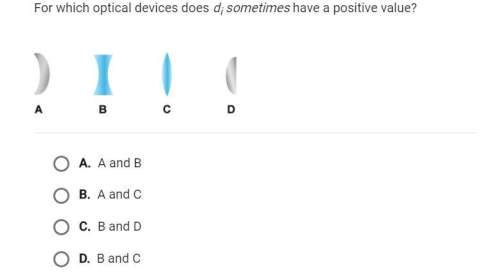
Physics, 31.03.2020 07:36 alexabessin
Iefly describe why an object might break up under the force of gravity as it approaches a planet. What happens if the planet is very dense? What if the planet is less dense?

Answers: 3


Another question on Physics

Physics, 21.06.2019 22:00
In a wind tunnel the speed changes as the cross sectional area of the tunnel changes. if the speed in a 6' x 6' square test section is 100 mph, what was the speed upstream of the test section where the tunnel measured 20' x 20'? use conservation of mass and assume incompressible flow. conservation of mass requires that as the flow moves through a path or a duct the product of the density, velocity and cross sectional area must remain constant; i.e., that ova-constant. a model is being tested in a wind tunnel at a speed of 100 mph if the flow in the test section is at sea level standard conditions, what is the pressure at the model's stagnation point? (a) the tunnel speed is being measured by a pitot-static tube connected to a u- tube manometer. what is the reading on that manometer in inches of water? (b) at one point on the model a pressure of 2058 psf is measured. what is the local airspeed at that point?
Answers: 2

Physics, 21.06.2019 22:00
There is a theory that indicates that dinosaurs became extinct when about 65 million years ago, a large asteroid hit the earth surface. dust caused by this collision blocked the sunlight reaching the earth's surface and many forms of life became extinct due to the cold. fearing this threat, how large the radius of an asteroid should you be looking for if the dangerous asteroid size is approximately the same as the one that killed the dinosaurs? available data suggests that about 18% of that asteroid's mass ended up as a dust spread evenly over earth after eventually settling out of the upper atmosphere. about 0.0180 g/cm^2 of dust, which is chemically different than the earth's rock, covered the earth's surface. typical asteroids have a density of about 1.9 g/cm^3. now that we know the size of the asteroid, how much energy was released during impact, assuming all of it was just the kinetic energy of the asteroid right before the impact?
Answers: 1

Physics, 22.06.2019 01:30
John throws .4 kg ball with velocity of 18 m/s. hits .2 kg bottle and bottle flies 25 m/s. how fast is ball traveling after hitting the bottle?
Answers: 1

Physics, 22.06.2019 17:20
Scientific models are based on current knowledge, which can limit their effectiveness when new discoveries are made.
Answers: 1
You know the right answer?
Iefly describe why an object might break up under the force of gravity as it approaches a planet. Wh...
Questions


History, 06.12.2021 08:40




Mathematics, 06.12.2021 08:40







World Languages, 06.12.2021 08:40

Mathematics, 06.12.2021 08:40



Mathematics, 06.12.2021 08:40






